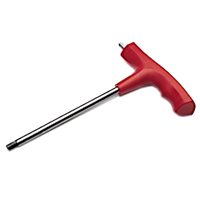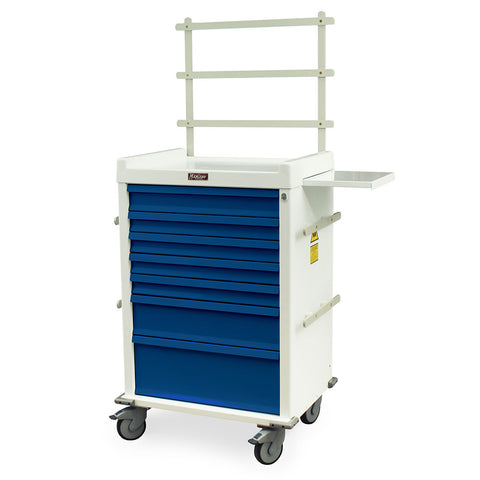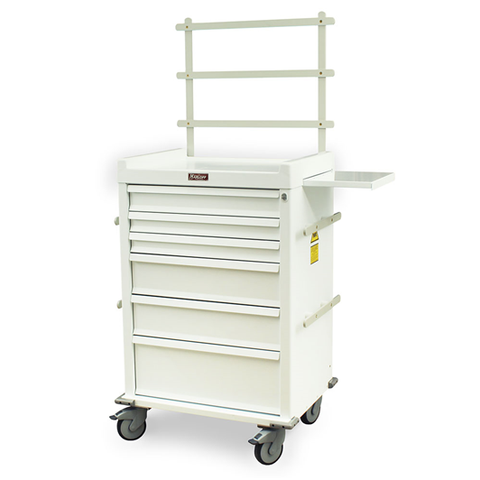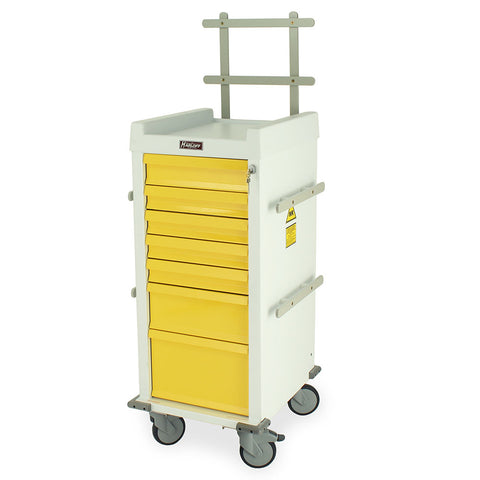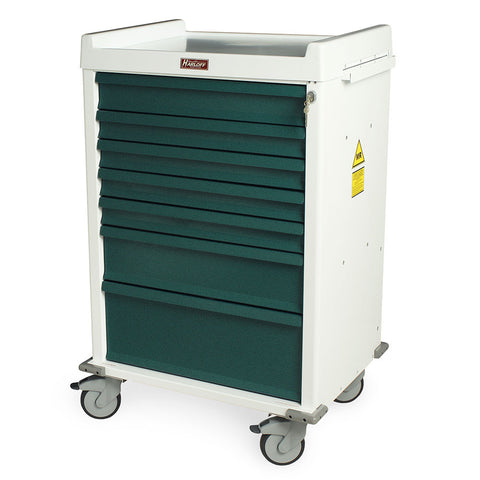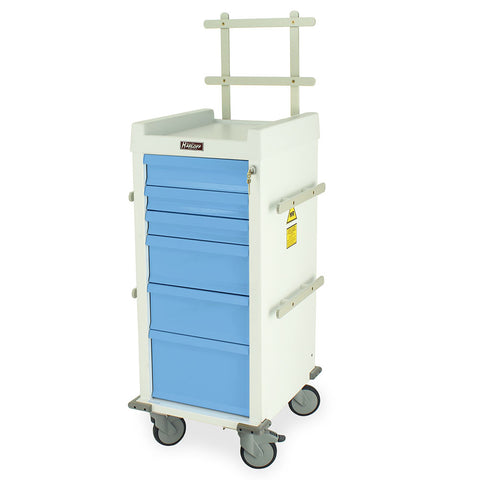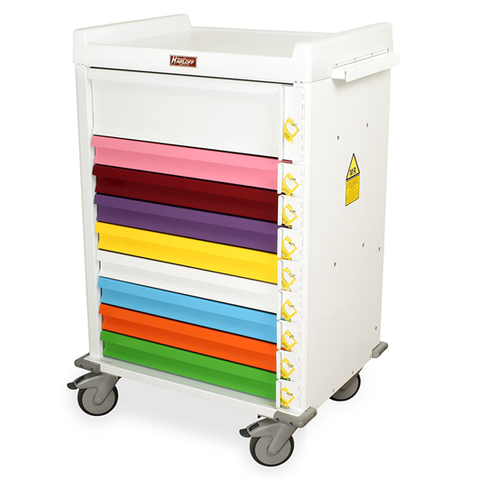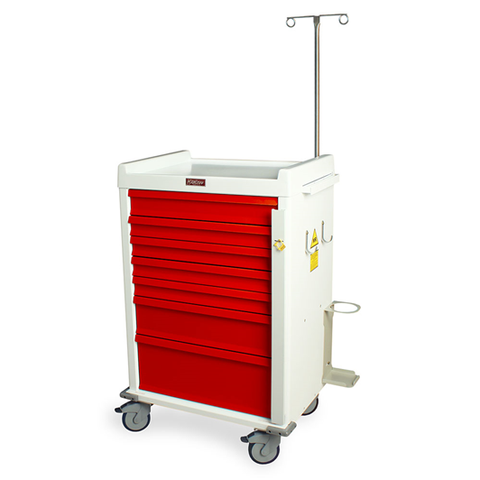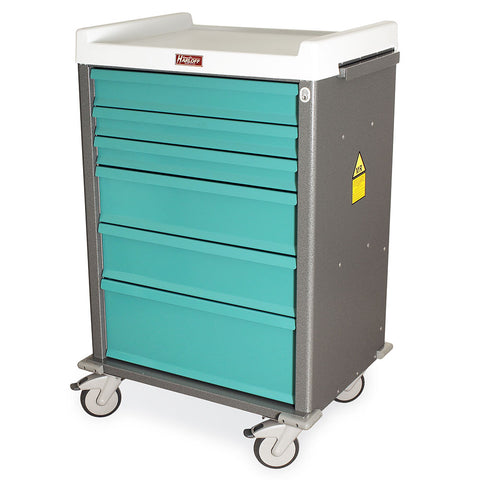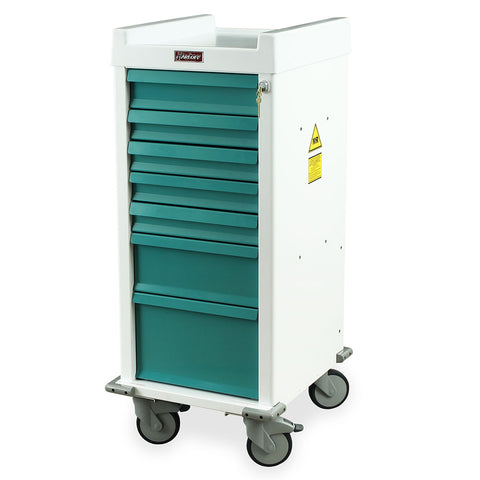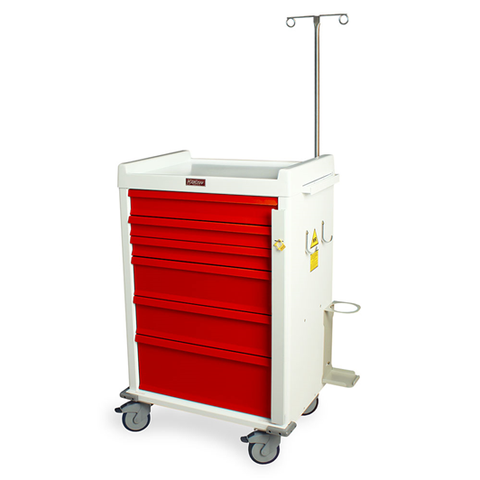The landscape of MRI patient transport is evolving rapidly. Hospitals and imaging centers are prioritizing safety, efficiency, and patient comfort, and 2025 brings notable innovations in MRIMed MR Conditional stretchers, wheelchairs, and MR Safe accessories. These advancements not only prevent accidents in MRI suites but also optimize workflow and improve patient throughput.
Overview of MRI-Conditional Transport Device Advancements
The Need for Safe and Efficient MRI Patient Transport
Patient transport within MRI suites involves inherent risks due to strong static magnetic fields, RF energy, and limited space. Traditional hospital stretchers and wheelchairs often present hazards, including projectile risks, thermal injury from RF exposure, and operational inefficiencies. MRIMed’s MR Conditional transport devices are engineered to address these challenges, providing safe, reliable, and ergonomically designed solutions for patients and staff.
Modern MRI transport requires devices that:
-
Comply with ASTM F2503 MR Conditional labeling standards.
-
Minimize manual handling and staff strain.
-
Enable smooth lateral transfers between devices and MRI scanners.
-
Support varied patient populations, including pediatric, bariatric, and sedated patients.
By prioritizing MR Safe/MR Conditional devices, hospitals reduce incidents while maintaining high patient throughput, particularly in high-volume MRI suites.
Emerging Technologies in MR Conditional Design
2025 trends highlight the integration of advanced materials and mechanical designs into MRI transport devices. MRIMed has introduced:
-
Non-ferrous, lightweight frames to reduce device weight without compromising stability.
-
Adjustable stretchers that accommodate patients of varying sizes and conditions, including bariatric options.
-
Ergonomic wheelchairs with flip-up arms and removable footrests for safe, flexible lateral transfers.
-
MR Safe accessories such as straps, backboards, and transfer aids designed to stabilize patients during imaging procedures.
These innovations enhance safety while maintaining workflow efficiency, allowing staff to transport patients confidently.
MRIMed 2025 Transport Device Innovations
MR Conditional Stretchers: Adjustable and Bariatric Options
MRIMed offers a range of MR Conditional stretchers, including the Non-Ferrous Height Adjustable Stretcher and the Stainless Steel Non-Magnetic Bariatric Stretcher.
-
Adjustable height: Facilitates smooth transfers between patient beds and MRI scanners.
-
Bariatric options: Support heavier patients safely while maintaining MR Conditional safety standards.
-
Smooth casters and locking mechanisms: Improve maneuverability in tight MRI suite spaces.
MR Conditional Wheelchairs: Enhanced Maneuverability
MRIMed’s 24-inch MR Conditional Wheelchair provides safe mobility for ambulatory patients. Key features include:
-
Flip-up arms for lateral transfers.
-
Removable footrests for patient comfort and accessibility.
-
High-quality non-ferrous construction to prevent hazards in magnetic fields.
These wheelchairs streamline patient flow, reduce manual lifting, and ensure compliance with MR Conditional safety requirements.
MR Safe Accessories: Straps, Backboards, and Transfer Aids
MR Safe accessories from MRIMed, such as the MRI Safe Backboard & Stretcher Straps, provide additional safety during transfers. They:
-
Secure patients during lateral transfers and MRI positioning.
-
Minimize risk of falls or movement during scanning.
-
Complement MR Conditional stretchers and wheelchairs to maintain complete MRI suite safety.
Features Driving Improved Safety and Efficiency
Lightweight, Non-Ferrous Materials
Advancements in non-ferrous materials reduce device weight while maintaining structural integrity. MRIMed’s MR Conditional devices use stainless steel and non-magnetic alloys, minimizing projectile risk and making it easier for staff to maneuver patients safely.
Ergonomic Design for Staff and Patient Comfort
Ergonomic features in MRIMed devices include:
-
Adjustable backrests for patient comfort.
-
Flip-up arms and removable footrests to reduce staff strain during transfers.
-
Cushioned surfaces to enhance patient support.
These designs reduce fatigue for staff and increase patient satisfaction during MRI transport.
Advanced Casters and Steering for Tight MRI Suite Spaces
MRIMed transport devices feature advanced casters and precision steering mechanisms, allowing safe navigation in narrow hallways, 90-degree turns, and small MRI suites. This improves workflow efficiency, particularly in high-volume facilities.
Equip Your Team with Tools They Can Trust
Get high-quality, MRI-dedicated equipment that supports safer scans, better positioning, and smoother patient care.
View Trusted Products
Workflow Optimization with Next-Generation Devices
Pre-Positioning Devices for High-Volume MRI Suites
Pre-positioning MR Conditional stretchers and wheelchairs near the MRI suite minimizes patient wait times and reduces bottlenecks. Staff can quickly move patients to the scanner, improving throughput and workflow.
Integrating Devices into Standard Operating Procedures
By incorporating MRIMed devices into SOPs, hospitals standardize patient transport steps, including pre-transfer checks, lateral transfers, and post-scan patient handling. Standardization reduces human error and improves safety.
Reducing Patient Transfer Times and Bottlenecks
Efficient device design, combined with trained staff, reduces the time required for patient movement. Hospitals report faster MRI completion, fewer delays, and increased staff productivity when using MRIMed MR Conditional devices.
Case Examples of 2025 Innovations in Action
Small Clinics: Compact Device Solutions
In small clinics, MRIMed’s compact wheelchairs and lightweight stretchers enable safe patient transport even in tight corridors. These devices allow single-staff operation while maintaining MR Conditional safety.
Mid-Size Hospitals: Hybrid Wheelchair and Stretcher Workflows
Mid-size hospitals benefit from hybrid workflows, using MR Conditional stretchers for sedated or bariatric patients and wheelchairs for ambulatory patients. MRIMed devices ensure both patient types are transported safely and efficiently.
Large Hospitals: High-Volume MRI Suite Efficiency
High-volume hospitals leverage MRIMed MR Conditional devices to minimize delays between scans. By standardizing workflows and pre-positioning equipment, staff can maintain high throughput without compromising safety.
Future Trends and Emerging Technologies
Smart Device Integration and Monitoring
Next-generation MRI transport devices may incorporate sensors to monitor patient stability, device positioning, and workflow timing, ensuring continuous safety compliance.
Materials and Engineering Innovations
Advanced alloys, lightweight composites, and ergonomic designs will continue to improve MR Conditional transport devices, making them safer and easier to use in MRI suites of all sizes.
Predictive Workflow Analytics for MRI Transport
Emerging software solutions may analyze patient flow, device utilization, and staff deployment to predict bottlenecks and optimize MRI suite efficiency in real time.
Best Practices for Selecting Next-Generation MR Conditional Devices
Ensuring MR Conditional Compliance and Safety
Select devices that meet ASTM F2503 MR Conditional standards for the MRI environments used in your facility. MRIMed devices provide clear labeling and testing documentation to ensure compliance.
Staff Training for New Technologies
Even advanced devices require trained personnel. Staff should learn proper transfer techniques, lateral patient movement, and use of MR Safe accessories for maximum safety.
Balancing Patient Comfort, Efficiency, and Safety
Choose devices that support patient comfort while improving workflow efficiency. MRIMed stretchers and wheelchairs achieve this balance, ensuring safe, smooth, and efficient transport.
FAQs:
1. What makes a transport device MR Conditional?
An MR Conditional device has been tested to operate safely under specified MRI conditions, including static magnetic field strength, spatial gradient, RF fields, and SAR. MRIMed stretchers, wheelchairs, and accessories provide clear labeling and documentation to ensure safe use in MRI environments.
2. How do 2025 MRIMed devices improve patient safety?
MRIMed’s 2025 innovations use non-ferrous materials, ergonomic designs, and MR Safe accessories like straps and backboards. These features prevent injuries from projectile hazards, RF heating, or improper lateral transfers, ensuring both patient and staff safety.
3. Can MRIMed devices accommodate bariatric or pediatric patients?
Yes. MRIMed offers bariatric stretchers and pediatric-sized wheelchairs to safely transport patients of all sizes while maintaining MR Conditional safety.
4. How do these devices optimize MRI workflow?
Features like lightweight frames, smooth casters, and adjustable heights allow staff to transport patients efficiently, reduce transfer times, and minimize workflow bottlenecks in both small and high-volume MRI suites.
5. What training is needed for staff using next-generation MRIMed devices?
Staff should receive instruction on lateral transfers, MR Safe accessory use, pre-positioning of devices, and emergency protocols to ensure patient safety and device efficiency.
6. Are MRIMed devices future-ready for smart hospital integration?
Yes. Innovations in materials, design, and potential integration with monitoring systems position MRIMed devices to support predictive analytics and enhanced MRI suite workflow in the coming years.
Related Resources and Further Reading
